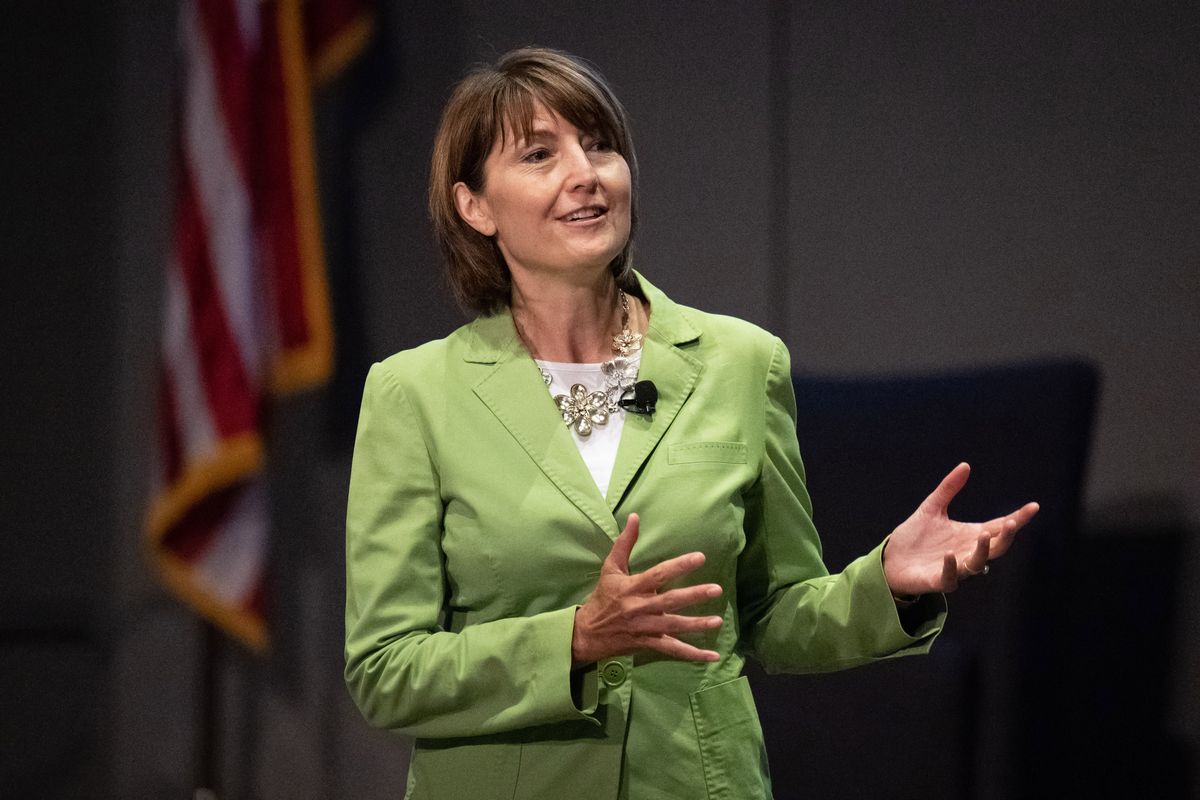This column reflects the opinion of the writer. Learn about the differences between a news story and an opinion column.
Spin Control: Democrats have yet to find right opponent in right year against McMorris Rodgers

There is an adage in politics that even the most successful and secure office holder can be beat by the right opponent in the right year.
If that’s true, U.S. Rep. Cathy McMorris Rodgers has yet to find herself in such a situation in her 10 races for Eastern Washington’s 5th Congressional District.
In nine of those races, including this year’s, she has bested her Democratic opponent in every county in the district. In 2018 – her closest race when she faced former state Sen. Lisa Brown – she lost one county.
Brown won Whitman County, primarily on the strength of the vote in and around the Washington State University campus, by about 650 votes. McMorris Rodgers won the district as a whole by more than 30,500.
Spokane County, which has about two-thirds of the district’s votes cast in most elections, is the one a candidate usually needs to win to capture the seat.
In the last 70 years, a candidate who has won Spokane County has only lost the district once, and that was in 1994, when U.S. Rep. Tom Foley, who was then Speaker of the House, won his home county along with Whitman County, but not by enough votes to fend off the challenge from Republican George Nethercutt, who racked up large margins everywhere else.
Prior to 1994, Foley’s seat had seemed secure. He’d won easily in the previous 15 elections, beating a 22-year incumbent in his first race and a variety of candidates afterwards. He occasionally lost a few rural counties to tough Republican challengers, but always managed large majorities in Spokane County. But 1994 helped prove the right-opponent, right-year adage, as Republicans swept into a House majority for the first time since 1954 and Nethercutt, a Spokane lawyer and former GOP County chairman ran a smart and well-funded campaign.
After 1994, Nethercutt won Spokane County in each of his four re-election campaigns before making an unsuccessful bid for the Senate.
When McMorris – who was then single – ran against Don Barbieri in 2004, Democrats had hopes of recapturing the seat. At the time, she was a legislator not well-known outside her Northeast Washington district and he was a second-generation Spokane businessman and former leader of the Regional Chamber of Commerce.
That race, however, established a pattern the district has seen for most of the last 20 years. Barbieri did relatively well in the city of Spokane, as the map accompanying this column indicates, with winning margins in downtown, the lower South Hill and West Central, East Central and neighborhoods near Gonzaga University. But McMorris ran up big margins in the Spokane Valley, other suburban areas and rural precincts.
McMorris Rodgers, who married Brian Rodgers in 2006, had her most lopsided victory in 2008, when she defeated Mark Mays – a psychiatrist, lawyer and Eastern Washington University trustee – with 65% of the vote. Her percentage in Spokane was nearly as large, at 63%, and as the maps that accompany this column show, Mays’ margins of victory were trimmed or erased in some of the precincts Barbieri carried.
For the next 10 years, McMorris Rodgers had relatively easy races, usually facing candidates with little or no experience running for a major political office and campaign funds that reflected that.
In 2018, however, Democrats thought they might have the right candidate in the right year. Lisa Brown, who had won some tough races for the state House and Senate, rose to the powerful position of Senate majority leader then left the Legislature to take the post of chancellor for Washington State University’s Spokane campus, announced her candidacy.
That was also a year when Democrats were hoping for a “blue wave” as a counter to President Donald Trump and GOP control of Congress.
Brown did much better than any other Democrat in Spokane County. She won most of the city of Spokane precincts, including by some large margins. She won all the precincts in Cheney, a few in the city of Spokane Valley, and turned some areas that were normally bright crimson, including Fairchild Air Force Base, a lighter shade of red.
But McMorris Rodgers still won Spokane County by about 11,000 votes. The blue wave did not wash her out of office.
The last two elections have been closer to average, with McMorris Rodgers collecting about 60% of the votes district wide, and a few percentage points less than her statewide total in Spokane County.
The map of the 2022 election shows Democrat Natasha Hill did markedly better than Barbieri in 2004 or Mays in 2008, winning most of the same precincts as Brown did in 2018, although with smaller vote totals. McMorris Rodgers continues to win most of Spokane Valley and other suburban areas of the county, and with large margins in some rural areas.
As it’s currently drawn, the 5th is obviously a “safe” Republican district and is likely to remain so – until the right year when the right candidate comes along.